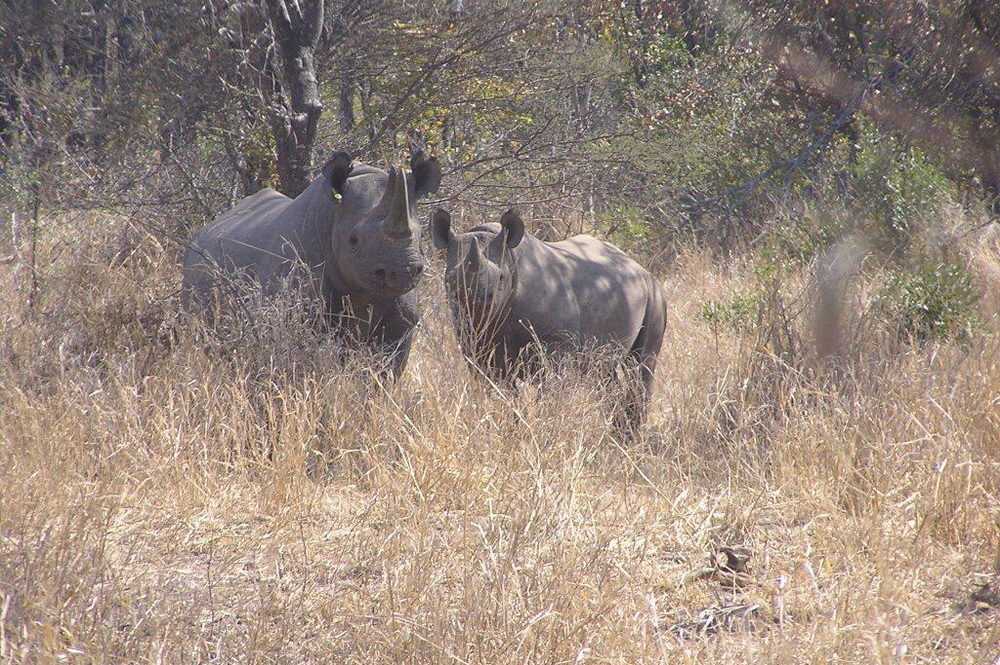Zimbabwe can be a challenging place for rhino conservationists. It’s where the current poaching crisis began in 2008, and c. 175 rhinos have been poached there during the past five years.
Zimbabwe is one of the ‘Big Four’ black rhino range states, together with South Africa, Namibia and Kenya. When poaching was at its height in 2008, the Lowveld Rhino Trust – our conservation partner in Zimbabwe – translocated more than 50 black rhinos out of particularly vulnerable areas, relocating them to safer places.
The Lowveld Rhino Trust works hard to increase numbers of both black and white rhinos, tracking and monitoring all their animals to ensure their long-term well-being and safety. Through this close monitoring, they can quickly intervene to treat rhinos injured from snare or bullet wounds.
Four emergency interventions have been required so far in 2018, including treating a rhino cow and calf from bullet wounds and capturing orphaned rhino calves that require hand-rearing. These incidents require a lot of resources, from sending up a helicopter to locate the animals, to the medicines and veterinary care costs. But the positive impact for the population is worthwhile: by the end of the year, it is hoped that the maturing calves will be moved to a lion-free area where they can develop in a natural setting and learn the skills necessary to thrive in the wild.
The Lowveld Rhino Trust’s team not only work hard to keep rhinos healthy they also engage closely with local communities. During the first six months of 2018, ‘talk and film’ sessions were organised at 19 schools, with more than 6,000 students and 280 teachers watching a film about rhinos before asking questions and learning more about rhino conservation. The Trust has given out more than 91,000 exercise books to students, inspiring strong, positive relations with wildlife and spreading the message further about rhino conservation. Communicating with communities is essential to foster partnerships with local people, as well as promoting sustainable tourism practices and providing support for communities through outreach projects.
The Lowveld Rhino Trust has seen continued success from its efforts to help build the Lowveld region’s black rhino population. In 1990, the area hosted just 4% of the national population; by mid-June this year, the figure stood at 89%, demonstrating the effective techniques implemented by the Trust. And what’s more, nine new-born rhino calves have been spotted already this year!
Success stories such as this demonstrate the real impact of effective conservation programmes at a time when rhinos are under constant threat. We’re excited to see what more can come from the Trust’s continued efforts.
Thanks to the generous support from our members, partners and all rhino lovers, the Lowveld’s rhino numbers can keep increasing.









